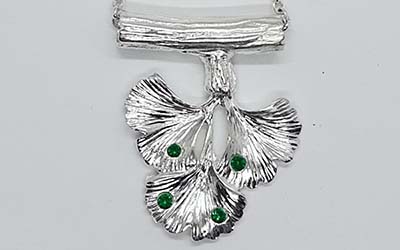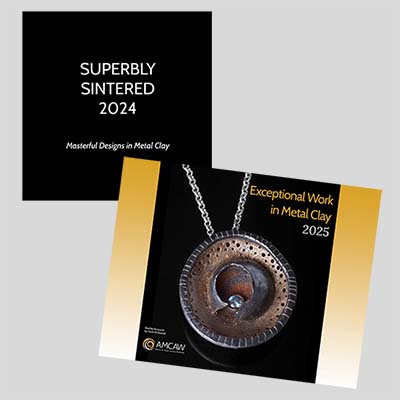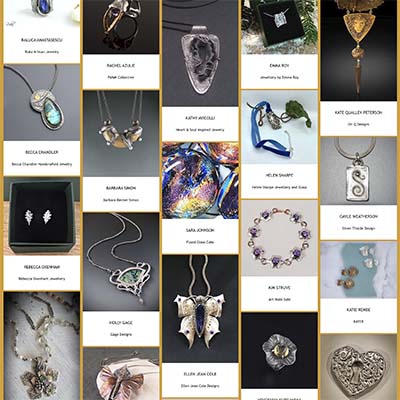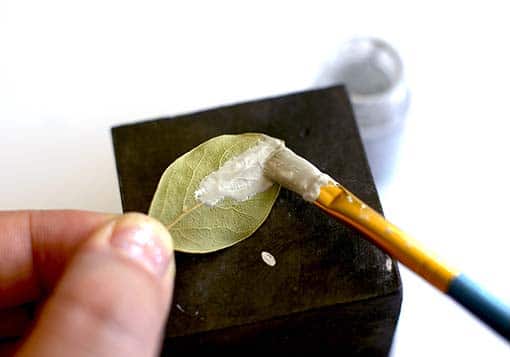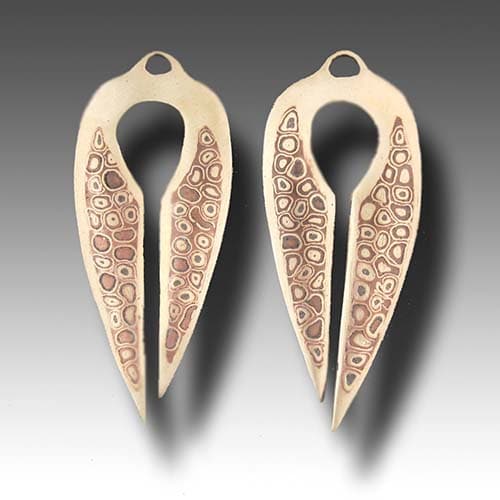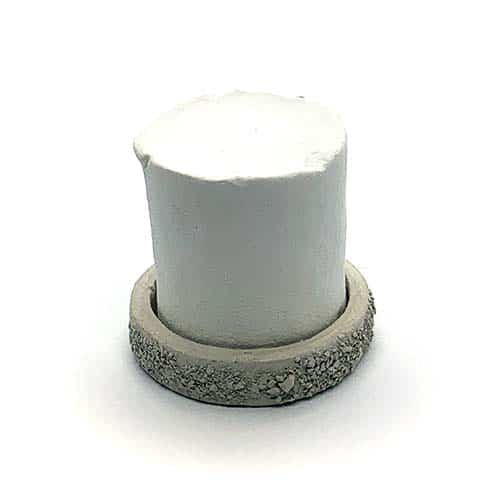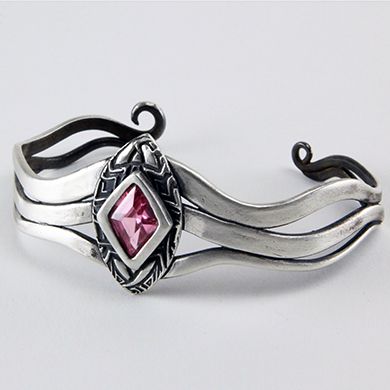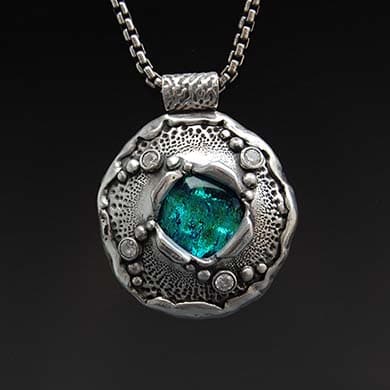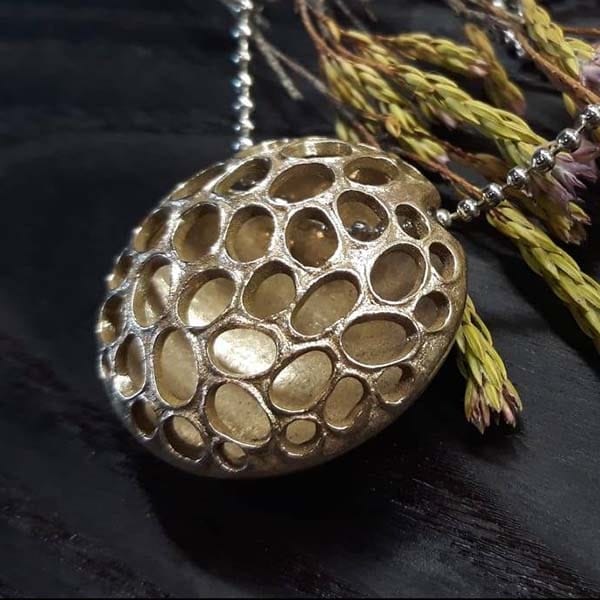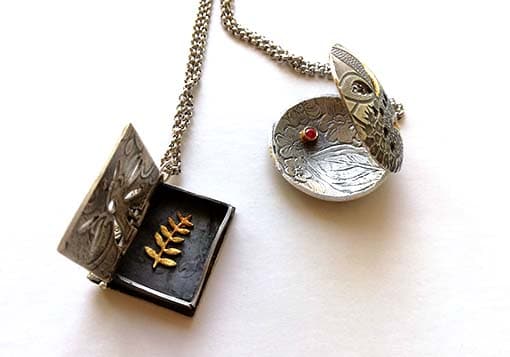Then What?
Firing results in a solid piece of metal that can be used and handled in many of the same ways that any other metal element would be used. All the techniques used in traditional jewelry making such as sawing, soldering, drilling, or riveting can be used to complete a metal clay design. The metal clay element can also be combined with wood, leather, sheet metal, plastic, ceramics, polymer clay, cement and numerous other materials as part of a mixed media construction.
Color can be added with gilding techniques such as Keum Boo or using 22k gold paste. Enameling techniques like Basse-Talle, Champlevé, Cloisonné, or Plique-à-jour work well with both fine silver and copper clay. The application of color using resin, alcohol ink, ceramic or acrylic paint, pencils, waxes, and tints can also be used with fired pieces.


